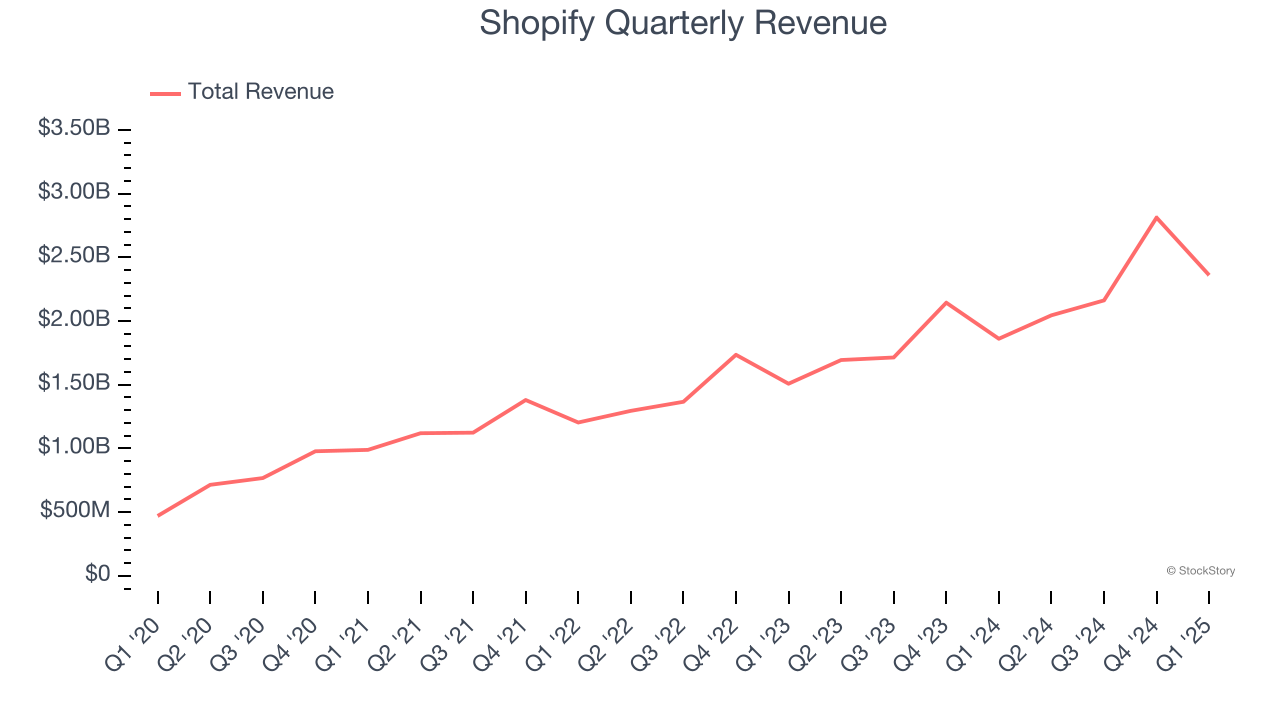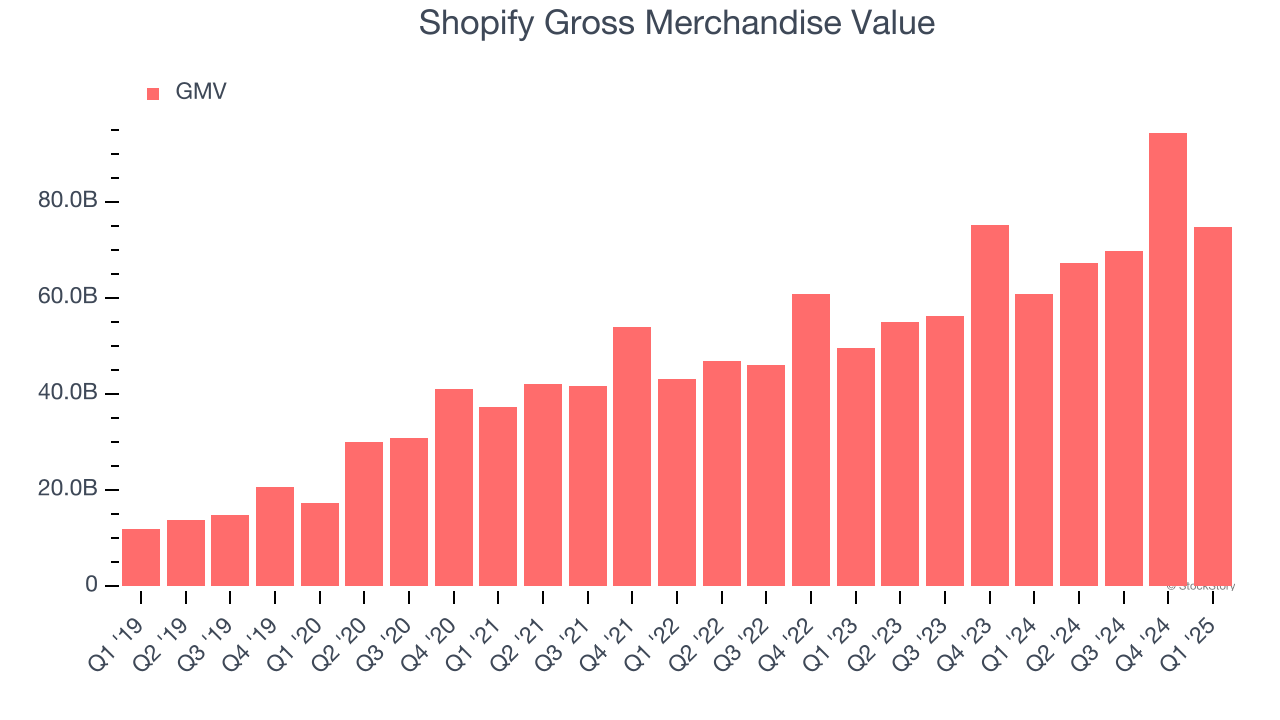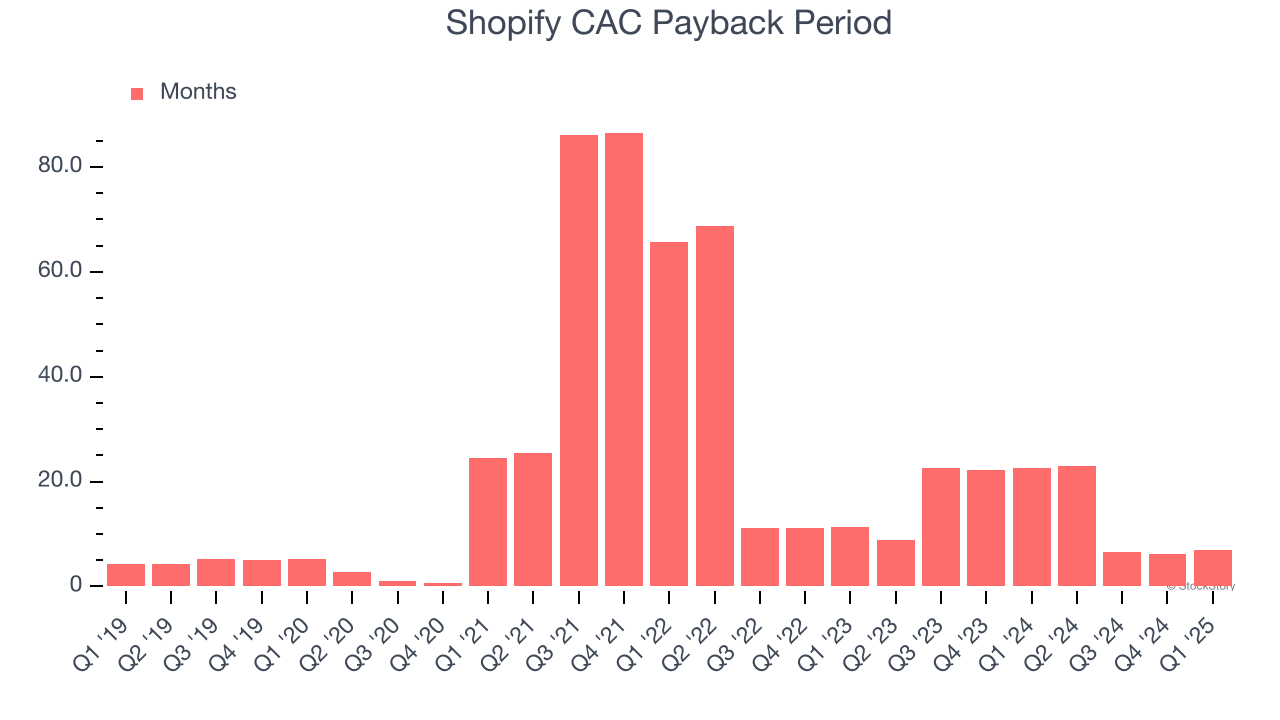
E-commerce software platform Shopify (NYSE: SHOP) reported Q1 CY2025 results beating Wall Street’s revenue expectations, with sales up 26.8% year on year to $2.36 billion. Guidance for next quarter’s revenue was optimistic at $2.56 billion at the midpoint, 2.2% above analysts’ estimates. Its GAAP loss of $0.53 per share was significantly below analysts’ consensus estimates.
Is now the time to buy Shopify? Find out by accessing our full research report, it’s free.
Shopify (SHOP) Q1 CY2025 Highlights:
- GMV: $74.75 billion vs analyst estimates of $74.90 billion (22.8% year-on-year growth, slight miss)
- Revenue: $2.36 billion vs analyst estimates of $2.34 billion (26.8% year-on-year growth, 1.1% beat)
- EPS (GAAP): -$0.53 vs analyst estimates of $0.17 (significant miss)
- Adjusted EBITDA: $325 million vs analyst estimates of $335.6 million (13.8% margin, 3.2% miss)
- Revenue Guidance for Q2 CY2025 is $2.56 billion at the midpoint, above analyst estimates of $2.50 billion
- Gross Profit Guidance for Q2 CY2025 lowered to high-teens percentage growth from low-twenties percentage growth
- Operating Margin: 8.6%, up from 4.6% in the same quarter last year
- Free Cash Flow Margin: 15.4%, down from 21.7% in the previous quarter
- Market Capitalization: $122.6 billion
Company Overview
Originally created as an internal tool for a snowboarding company, Shopify (NYSE: SHOP) provides a software platform for building and operating e-commerce businesses.
Sales Growth
A company’s long-term performance is an indicator of its overall quality. Any business can put up a good quarter or two, but many enduring ones grow for years. Luckily, Shopify’s sales grew at a solid 24.8% compounded annual growth rate over the last three years. Its growth surpassed the average software company and shows its offerings resonate with customers, a great starting point for our analysis.

This quarter, Shopify reported robust year-on-year revenue growth of 26.8%, and its $2.36 billion of revenue topped Wall Street estimates by 1.1%. Company management is currently guiding for a 25% year-on-year increase in sales next quarter.
Looking further ahead, sell-side analysts expect revenue to grow 19.7% over the next 12 months, a deceleration versus the last three years. Despite the slowdown, this projection is commendable and indicates the market is forecasting success for its products and services.
Software is eating the world and there is virtually no industry left that has been untouched by it. That drives increasing demand for tools helping software developers do their jobs, whether it be monitoring critical cloud infrastructure, integrating audio and video functionality, or ensuring smooth content streaming. Click here to access a free report on our 3 favorite stocks to play this generational megatrend.
Gross Merchandise Value
GMV, or gross merchandise value, is the total value of goods and services sold on Shopify’s platform. This is the number from which the company will ultimately collect fees (usually called a take rate), and the higher it is, the higher the switching costs, enabling Shopify to monetize in additional ways (like subscription revenue for more services).
Shopify’s GMV punched in at $74.75 billion in Q1, and over the last four quarters, its growth was impressive as it averaged 23.7% year-on-year increases. This alternate topline metric grew slower than total sales, meaning its revenue from adjacent products such as merchant loans and AI-driven inventory management software outpaced its transaction fees. This signals the company is locking its customers further into its platform and mining them for profits. 
Customer Acquisition Efficiency
The customer acquisition cost (CAC) payback period measures the months a company needs to recoup the money spent on acquiring a new customer. This metric helps assess how quickly a business can break even on its sales and marketing investments.
Shopify is extremely efficient at acquiring new customers, and its CAC payback period checked in at 6.9 months this quarter. The company’s rapid recovery of its customer acquisition costs indicates it has a highly differentiated product offering and a strong brand reputation. These dynamics give Shopify more resources to pursue new product initiatives while maintaining the flexibility to increase its sales and marketing investments. 
Key Takeaways from Shopify’s Q1 Results
It was encouraging to see Shopify beat on revenue and provide revenue guidance for next quarter above analysts’ expectations. On the other hand, its GMV missed slightly and Q2 gross profit guidance was lowered, reflecting gross margin pressure on the business. Overall, this was a softer quarter. The stock traded down 8.8% to $86.24 immediately following the results.
Is Shopify an attractive investment opportunity at the current price? The latest quarter does matter, but not nearly as much as longer-term fundamentals and valuation, when deciding if the stock is a buy. We cover that in our actionable full research report which you can read here, it’s free.


